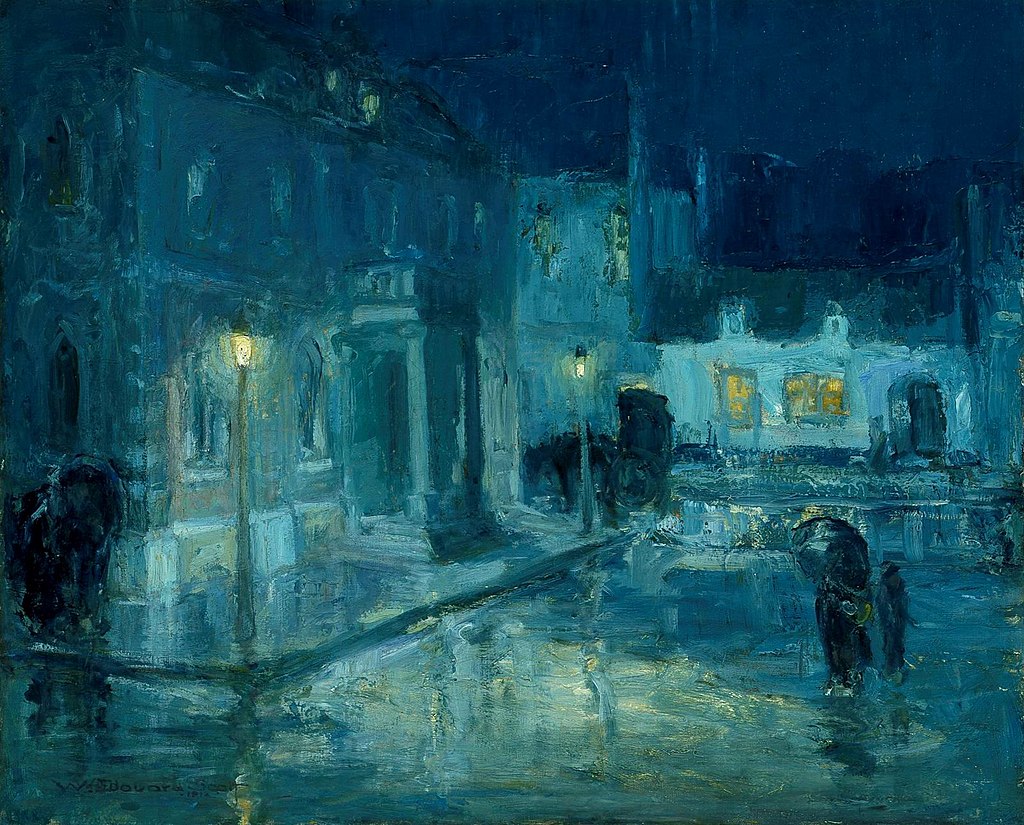
Photo info …
Credit: New York Public Library, Public domain, via Wikimedia CommonsView Source
(Mar. 11, 1884-May 15, 1964). Born in Indianapolis, African American artist William Edouard Scott attended Public School No. 23 and , where he studied under . After high school, Scott spent a year working and studying at before enrolling at the Art Institute of Chicago. In his fourth and fifth years at the institute, he won the Frederick Magnus Brand Prize for pictorial composition.
Scott left for France in 1909 where he studied at the Académie Julian and with Black painter Henry Ossawa Tanner. In France, Scott, like Tanner, could establish his reputation as an artist more easily than he could have as an African American in the U.S. He often visited Tanner at the Etaples art colony in northwestern France.
During this time, the Salon des Beaux Arts at Touquet accepted three of his paintings. His painting La Pauvre Voisine was accepted at the great spring salon in Paris in 1912, and the Argentine Republic purchased it for $600. That same year, Scott had an exhibit of 26 paintings in Indianapolis at the studio of Otto Stark.

In 1913, the Royal Academy in London accepted some of his paintings, and he received a commission from Indianapolis Public Schools to paint murals in elementary schools. In 1914, he was the only Black among a group of individual artists (principally Herron alumni) commissioned to create murals for the Indianapolis City Hospital. A group of Black Indianapolis residents also purchased his 1912 painting, Rainy Night, Etaples, in 1913 and presented it to the Herron Art Institute for its collection. The Harmon Foundation presented Scott in 1927 with a special gold medal for distinctive achievement in fine art.
Through his work, Scott tried to work toward a goal of interracial understanding. He received a Rosenwald fellowship to study in Haiti in 1931. While there, he completed over 100 works. He produced some of his most well-known paintings during this time.
Scott painted market scenes and Haitians engaged in various types of labor. Among his most famous Haitian paintings are Night Turtle Fishing (1931) and Haitian Market (1950).
Critics, however, have criticized portraits in which Scott endeavored to capture “50 distinct Negro types” in Haiti as being similar to what Europeans created to justify racist ideologies. His Haitian landscapes likewise tend to depict virgin nature scenes, rather than including aspects of Haitian culture or history. Nevertheless, Haitians have appreciated his work. The president of Haiti purchased 10 of Scott’s paintings and in 1936 presented him with a national medal of honor.
Scott is also known as a painter of murals. In 1943, the National Anonymous Mural Competition selected his sketch for Frederick Douglass Appealing to President Lincoln as one of seven murals for the Recorder of Deeds Building in Washington, D.C. He was the only Black artist chosen. He also created murals for the Wabash YMCA in the Bronzeville district of Chicago. These murals fell into disrepair but have been restored and are part of the historic landmark.
Despite criticism of his work, Scott is considered a transitional figure in the way that Blacks are portrayed in art. Although much of his work remained conservative, he crossed racial barriers by depicting positive Black subjects.

Help improve this entry
Contribute information, offer corrections, suggest images.
You can also recommend new entries related to this topic.

